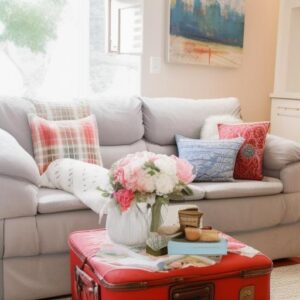Unveiling the Essence of Authentic Italian Interior Design: Exploring the 5 Essential Elements
Italian interior design has long been admired for its timeless beauty, elegance, and artistic essence. From Renaissance palaces to modern-day apartments, Italian design effortlessly combines historical influences with contemporary aesthetics. In this article, we will dive into the world of Italian interior design to unveil its essence by dissecting the fundamental components that contribute to its authenticity. By exploring historical and cultural influences, architectural styles, color palettes, furniture choices, and textile preferences, we hope to inspire readers to incorporate these essential elements into their own spaces.
1. Historical and Cultural Influences:
Italian interior design draws inspiration from a rich cultural heritage, encompassing artistic movements such as the Renaissance and Baroque periods. The influence of these historical eras is evident in the elaborate details, ornate furnishings, and artistic motifs found in Italian interiors. By embracing the history and cultural significance of Italian design, one can truly capture its authentic essence.
Case Study: The Palazzo Ducale in Venice is an exemplary representation of Italian interior design. Its intricate frescoes, gilded ceilings, and opulent furnishings showcase the grandeur and elegance that define Italian architectural history.
2. Architectural Styles:
Italian interior design encompasses a range of architectural styles, each contributing to the uniqueness of Italian spaces. From the grandeur of the Italian Renaissance to the simplicity of Mediterranean coastal villas, these styles showcase a seamless blend of functionality, aesthetics, and craftsmanship.
Case Study: One prominent architectural style that reflects the essence of Italian design is the Tuscan farmhouse. It combines rustic elements like exposed wooden beams and stone walls with elegant furnishings, creating a warm and inviting atmosphere.
3. Color Palettes:
Colors play a crucial role in Italian interior design. Earthy tones, warm neutrals, and rich hues inspired by the Italian landscape are commonly used to create a sense of harmony, elegance, and sophistication. Vibrant accents are often incorporated to add pops of color and personality to the overall design.
Case Study: The Casa Malaparte in Capri exemplifies the use of a neutral color palette accented with bold pops of blue, reflecting the coastal landscape. This balance creates a captivating and serene space.
4. Furniture Choices:
Authentic Italian interior design places great emphasis on furniture as a key element for creating a cohesive and sophisticated space. From ornate and classic pieces to sleek and contemporary designs, Italian furniture blends traditional craftsmanship with modern functionality.
Case Study: The iconic designs of Italian architects Piero Lissoni and Patricia Urquiola, such as the Cassina LC2 chair and Moroso’s Victoria & Albert Sofa, showcase the fusion of classic and contemporary Italian design, resulting in timeless and comfortable pieces.
5. Textile Preferences:
Textiles are an essential component of Italian interior design, adding richness and texture to the space. Italians have a rich textile heritage, and their preference for high-quality fabrics like silk, brocade, and velvet is evident in their designs. Intricate patterns and details, such as damask and tapestry, are also commonly used.
Case Study: Design house Rubelli, renowned for its luxurious fabrics, showcases the epitome of Italian textile preferences. Their exquisite collections blend traditional craftsmanship with innovative techniques, creating sumptuous fabrics that elevate any interior.
Italian interior design is a fusion of historical heritage, cultural influences, architectural styles, carefully curated color palettes, furniture choices, and textile preferences. Its authenticity lies in the harmonious blend of the past and present, creating spaces that are both aesthetically captivating and functionally practical. By understanding and incorporating these essential elements into our own spaces, we can create an ambiance that captures the timeless elegance and artistic essence of authentic Italian design.
European Design: Exploring the Timeless Elegance and Cultural Diversity



